Aesthetic Photography Guide

The range of images taken to please the eye is called aesthetic photography. The special atmosphere requires an understanding of light and color theory combined with a good sense of composition and a special subject.
Aesthetic Photography: 20 Tips & Ideas
The concepts below will help you take photos that are aesthetically pleasing to the human eye.
1. Use the Rule of Thirds

The rule of thirds in photography implies creating three equal vertical and horizontal segments in the frame. Any camera will have this grid as one of the viewing options to help you make a more precise estimation.
In aesthetic photography, these lines guide the placement of objects which can follow them or be placed on intersections. A horizon, for instance, looks the best when set over one of these guides or in a close parallel.
2. Use the Leading Lines
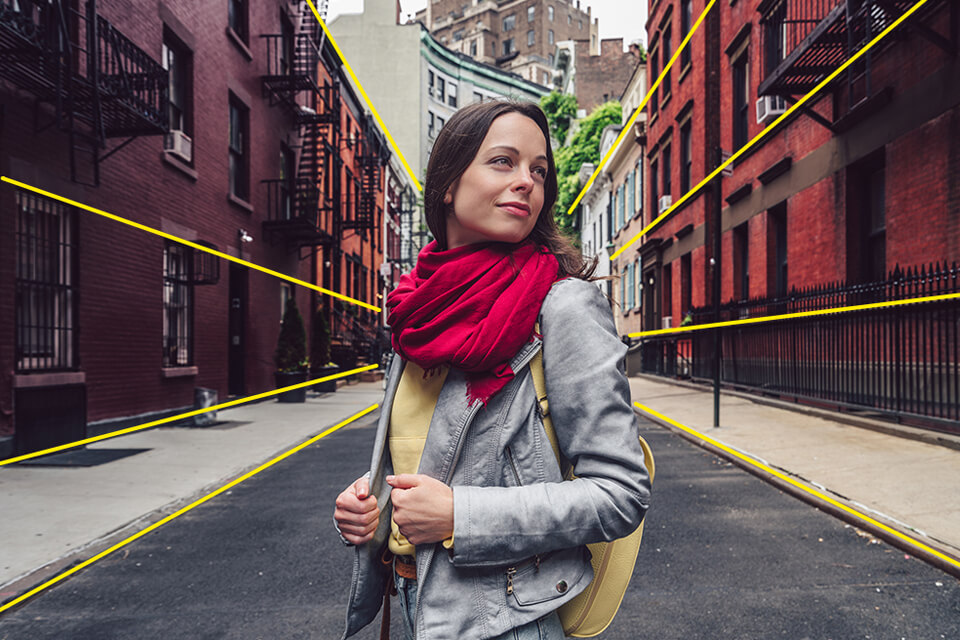
Leading lines photography is a technique that engages some line that guides the gaze of the viewer towards the main object.
A great example is a road. There are many other man-made items such as fences, bridges, brickwork, or some evenly spaced items erected in a line like lamp posts that can also be used for such purpose.
If nature is your background, you can use similar shapes like rivers or any shorelines, various straight plants, textured cliffs, even rays of the sun.
3. Use Triangles
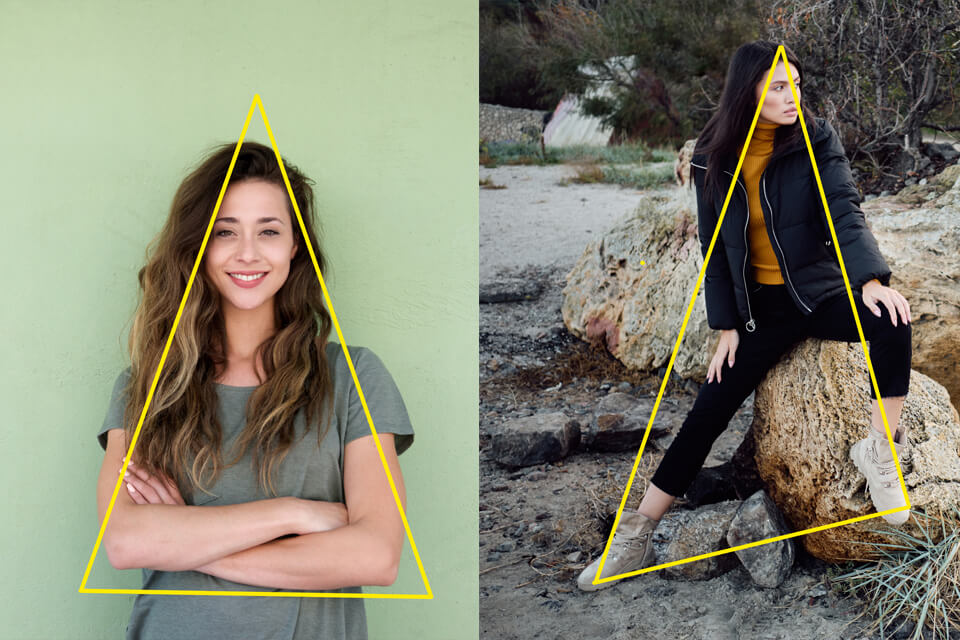
An interesting method is to set the objects over three points creating a triangle. They will not only guide the eyes of viewers but also establish a relationship and tell a story.
This technique is interesting to play with since the type of triangle can determine the mood. When the spaces are even, this impresses stability on the viewer, by making the sides uneven you evoke more emotions. Several triangles can help the aesthetic image to have a more complex impact.
4. Learn about the Gestalt Theory
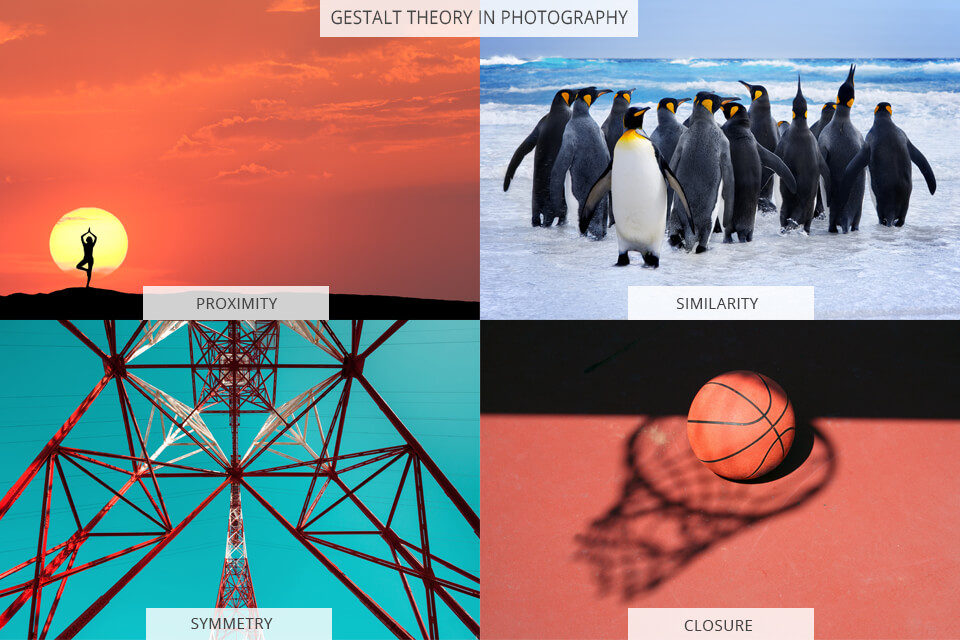
According to this theory, your brain approaches complex information with an attempt to structure and simplify it, creating an organized system out of the numerous elements which will make understanding easier.
The theory consists of 7 main principles:
- Law of Similarity states that any objects that share a feature like a shape, color, type, etc., will be grouped together.
- Law of Closure refers to any incomplete or suggested shapes in the image that our brain subconsciously completes.
- Law of Symmetry notifies us of the natural tendency to seek balance or symmetry in what we see.
- Law of Common Fate treats objects that share a direction as a single group.
- Law of Proximity indicates a similar tendency to group objects located in tight proximity. Forced perspective photography relies solely on this principle.
- Law of Figure/Ground states that contrasting elements, for instance, those of black and white colors, will be instantly separated in our mind.
- Law of Continuation mentions a tendency to treat items aligned with an object as included it its group and do the opposite for items with a visibly different alignment.
5. Try the Rule of Odds

When you have a number of elements in the frame, it is always preferable to have an odd one. Alternatively, you can have them arranged in groups the number of which should also be odd. Even numbers are less pleasing in aesthetic images.
An introduction of even numbers creates a sense of discomfort and tension because they are perceived as competing for your attention. Breaking the content with an odd number allows for a more restful observation of the image and establishes some sort of harmony in its atmosphere.
6. Add Negative Space
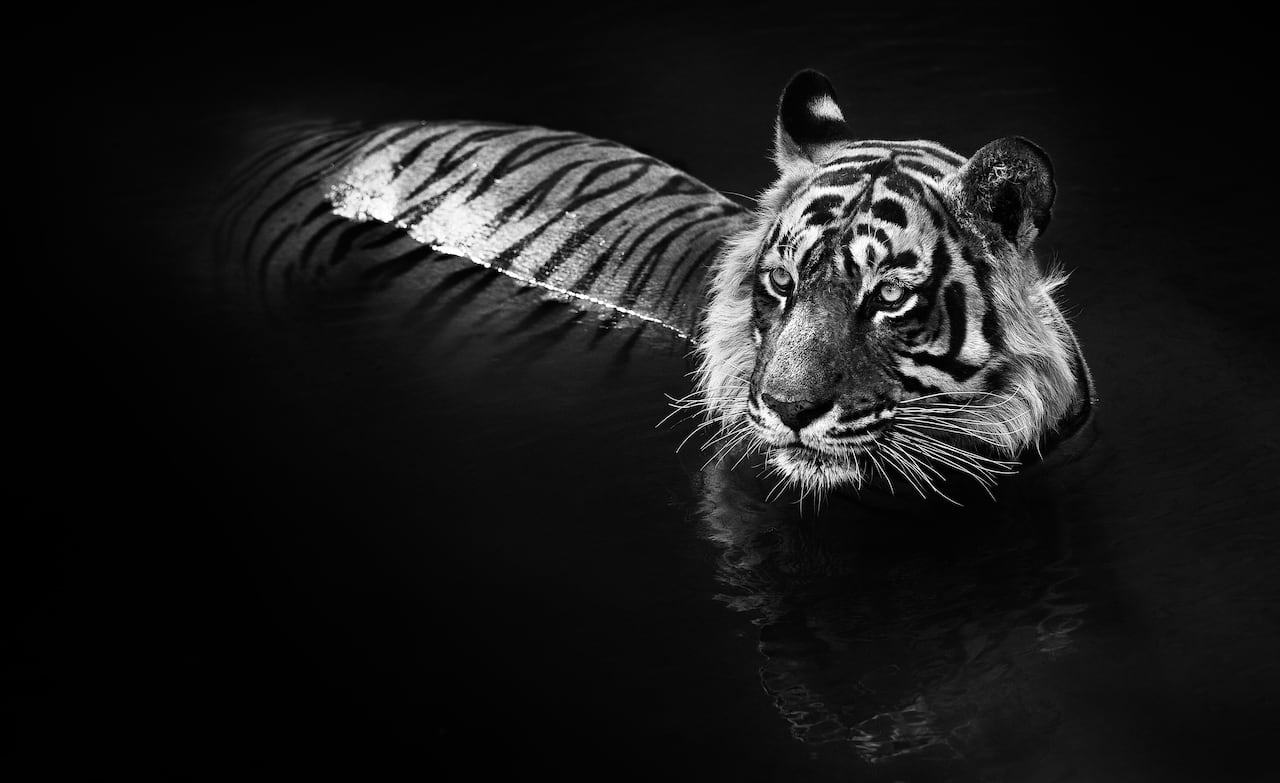
Minimalism allows the eye to rest and this is a great aesthetic instrument. You can create negative space around the subject of your image engaging a background with a mild uniform texture to put an emphasis and create a sense of calmness.
7. Frame Within a Frame
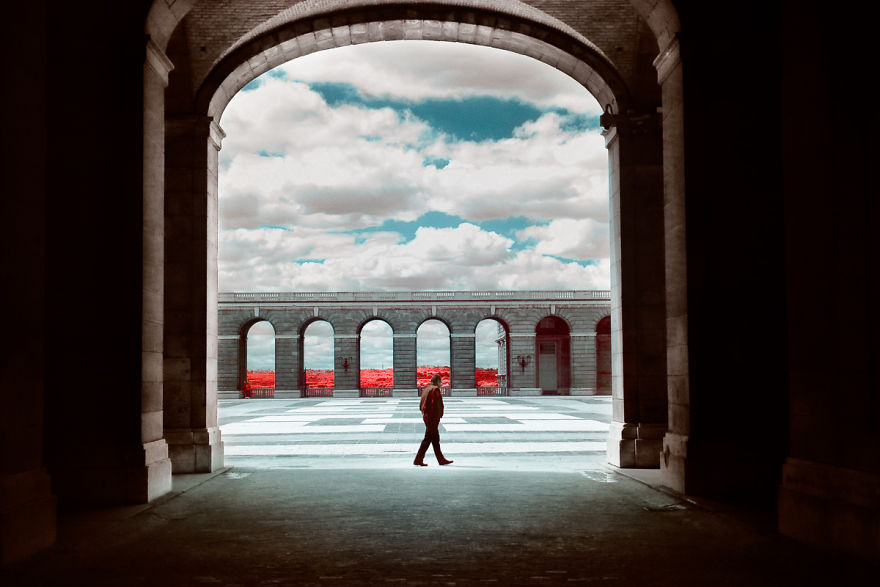
To lock the attention of the viewer, you can use an interesting and efficient technique of framing the centerpiece of the shot. Existing structures can be helpful, like the doorways or similar architectural elements. Nature can also be used, tree trunks capable of narrowing the attention of the viewer.
Creativity is welcome in the photo aesthetic and you can use a variety of objects. It doesn’t necessarily need to be something big as a window or mirror, the rim of your sunglasses can be artistically applied as well.
8. Shoot RAW
The technique doesn’t only rely on taking the shot correctly, much depends on the image post-production as well. Quality can be improved and mood dramatically changed simply by using the software.
That is why the best option is to always shoot in RAW, the obtained quality allowing quite impressive changes. Alternatively, go can go for an unusual atmosphere impossible to capture naturally.
9. Choose the Subject You Connect With

Naturally, the subject you are concentrating on affects the whole aesthetics of the shot and the message sent to the viewer so it needs to be chosen carefully.
Are your subjects randomly jumbled together or can they fall into easily defined categories? Do you gravitate towards a specific theme like nature, portraiture, or macro? The most impressive frames are created when the subject speaks to you in its peculiar way.
10. Use Contrast and Affinity
Much of the visual influence is caused by affinity or contrast in photography. The latter is a strong difference between lights and darks, the former is the difference being reduced or minimized.
In aesthetics photography, high contrast is normally avoided because it causes a more striking influence on the viewer and the frame is perceived as more dramatic. Affinity is more common as it installs calmness in the mind and eases your goal.
11. Mind the Focus
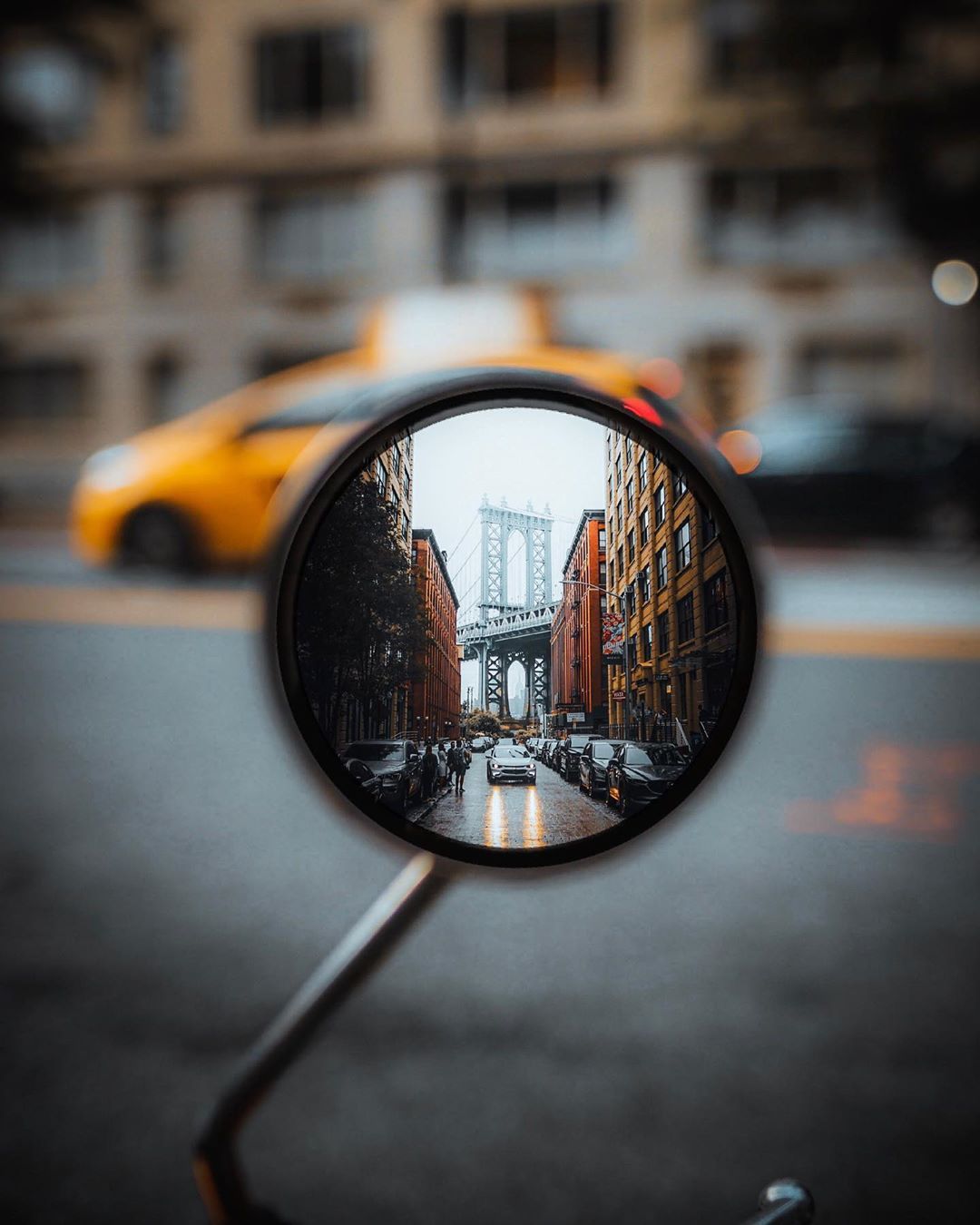
Focus is an important element that sets the emphasis on where it falls. Whatever is in focus retains all the details and is immediately noticeable. Anything outside the ring of focus will be pushed back.
Understandably, the aesthetics are largely influenced by the focus so treat it as one of your main weapons. Engage the eye with what’s important and blend the rest into the background.
12. Consider the Lighting
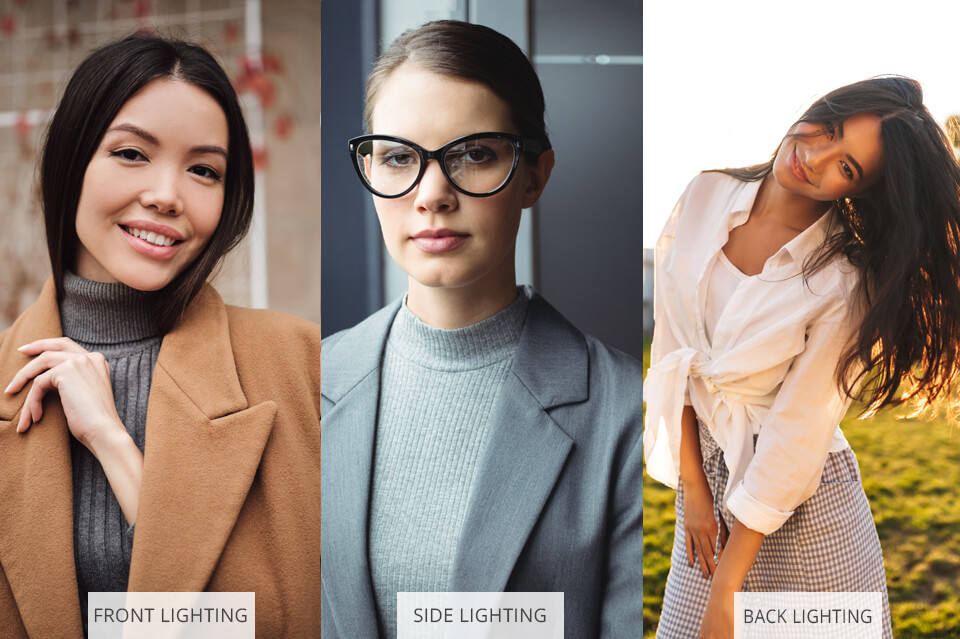
In photography aesthetic sensations can be caused by the play of light. Any item in the frame can look different just from the light changing its direction. The shape of the item, shadows, and reflections, all this will play a role in the outcome.
If you only take the main types of illumination, the beam can be pouring light from the front, side, or back of the item. As you’re taking the pictures, try doing all three to see how the mood and aesthetics change.
13. Use Shadows

Opposed but tightly related to the previous tip, a shadow can also become a tool. Shadows add more realism to the frame and can create a subtle dramatic or mysterious effect that will not go against the genre. Devote some attention to the play of shadows in the frame and you can achieve interesting results.
If your aesthetic photography looks too flat and unimpressive, make the textures more striking by shifting the light and making some subtle shadows appear.
14. Pay Attention to Colors

Arguably, the biggest influence on the viewer will be caused by the colors since even a variation in shades causes a change of perception.
If the image should radiate serenity, fill it with cool colors, and do the opposite when more energy is needed. This aspect should be treated seriously so study the theory and make use of the color wheel to succeed in complementary colors photography.
15. Incorporate Movement

Don’t shy away from motion because it is helpful in making the shot more engaging. Psychologically, we are attracted to movement, so the images feel more interesting and influential.
Even if the movement is very subtle, almost suggested rather than made, it will influence the viewer in an entirely different way. To keep it in focus, increase the shutter speed (250+).
16. Favor Lifestyle Photos Over Posed

Lifestyle photography is a substantial portion of this large genre. For aesthetic portraits to look natural, you have to get used to working in an un-choreographed environment.
Anything you do, must be done patiently and the ability to predict the immediate turn of events will aid you greatly. The burst mode will become your biggest friend as well.
17. Compile and Analyze the Images You Like

If you need a starting point, a quick analysis that involves collecting the most appealing images from fellow photographers will be most helpful. Such options as Instagram, Pinterest, or Tumblr photography blogs will be easy to use.
Otherwise, you can investigate the photography portfolios of famous photographers.
Copy everything that appeals to you into a separate folder, go over it and try to single out instruments and approaches that create the aesthetics you like.
18. Analyze Your Own Work

For every photographer, aesthetic beauty has a different look and to have a clearer understanding of what yours is, you can research your portfolio and compare the images you appreciate more with those that your viewers favor instead.
Single out the main elements in both categories. Consider in what way the frames in each selection are outstanding. This analysis will tell what determines the success of your works and help you increase it.
19. Ask Other Artists for Tips

No artist wants to be a copycat but discussions about artistic views and techniques, as well as equipment items, are important for any professional. Contact local colleagues or those in Internet communities, ask about the concepts that go into their art, how they come up and become implemented.
Aesthetic photography allows many tricks; you can take an energetic image and edit it down to something cool and mysterious. Casting a monochrome filter is a great way of giving the image a new aesthetics. Small changes can turn something already beautiful into absolutely outstanding.
20. Try to Break Down Other Artists’ Presets

Presets are an important professional tool and for creating your own aesthetics, it could be helpful to purchase or try to mimic the style or color correction of the most inspiring photographers. This will be the foundation of your own style, alter the presets one way and another to find something perfect and then save it for personal use.
Aesthetic Photography Freebies
This complex style can take a while to master but there are tools that can help. While you take care of the composition, these freebies will arrange the lighting and colors and the combined result will make it easier to showcase what is aesthetics photography in your regard.
Cinematic
There is a particular aesthetic in how the cinematograph used to look like and the plug-in is meant to recreate that for you. The images will get a soft glow with warmth in the skin tones and brightness increased.
Smoke
An image can benefit from a mysterious touch sometimes and this overlay gives you the realistic wisps of smoke to add some drama and style.
Bokeh
Often images receive insufficient light and to masterfully correct that afterward, you can apply a light bokeh that brightens the frame and fills it with golden flares.
Film
Such aesthetics can be achieved by making the image look like the one shot on film. This preset will add warmth to the tones and some light grain texture. You will receive the classic movie style at the end.
Landscape
For something with a deeper atmosphere and more dynamics in colors, this preset is very pleasant. It is the most beneficial for dawn images of nature.















